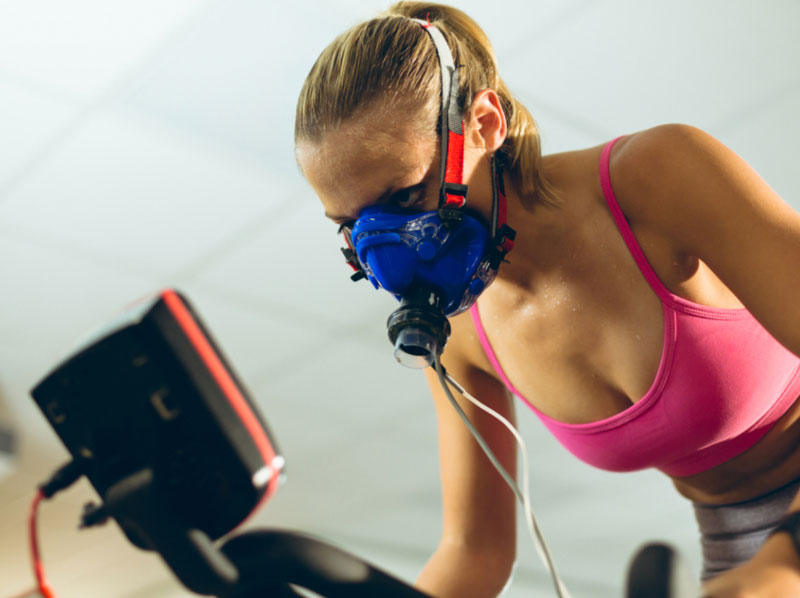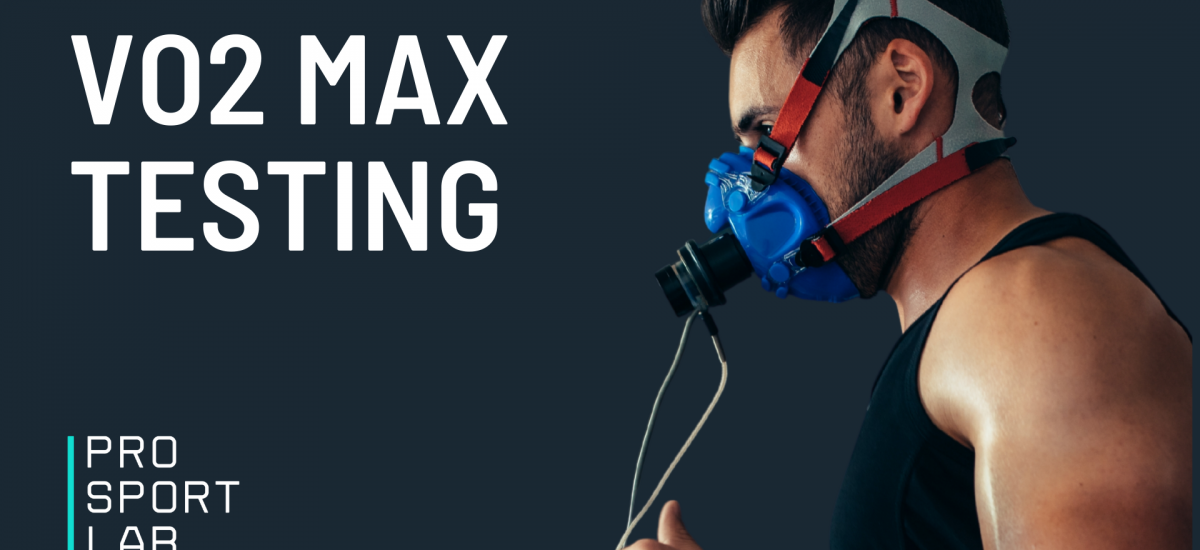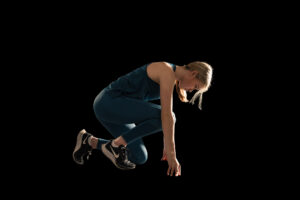The simple way of explaining VO2 max is the maximum amount of oxygen your body can take in and use during exercise at your hundred-percent intensity.
It is considered to be the gold standard measurement of cardiorespiratory fitness and reflects how fast your body can use oxygen to regenerate ATP (the energy-carrying molecule that is burned off as fuel during exercise) in your cells. The more oxygen your body can take in and use, the more energy you can expend for a longer period of time.
This is why athletes become hyper-focused on increasing their own VO2 max scored in an effort to optimise their performance. If you use a wearable device like a Polar or Garmin watch to track your training, then this will be able to give you a predicted value, but what do you do with that?

Firstly, this figure is only an estimate and whilst it gives you something to work from, it’s not a true value and will likely provide you with invalid data. Secondly, even with this information many people fail to implement a data driven approach to their training that could become a game-changer for your performance goals.
The trouble is, most people don’t actually focus their training towards improving their performance, they simply go through the motions.
A group ride or a club run may be great from a social perspective, and there is always a place to include these in your training plan, but without the focus of working to your specific heart rate zones, it’s likely that this type of training simply won’t challenge you enough or change you.
BOOK IN FOR YOUR TEST AT THE PRO SPORT LAB.
How do you measure VO2 max accurately?
A Cardiopulmonary Exercise Testing (CPET) takes place in a lab setting and involves wearing a mask and heart rate monitor that’s hooked up to a treadmill, bike or rowing machine. The mask is then connected to a device that takes a breath-by-breath analysis to determine the amount of oxygen you inhale, and the amount of carbon dioxide you exhale.
The protocol of the test involves the athlete completing an incremental exercise test that will gradually place more physiological stress on the heart, lungs and working muscles until your oxygen consumption value reaches a plateau – even as exercise intensity increases. This is your “max” and the point where the test will be terminated.
Your VO2 max is unique to you and is recorded in ml of oxygen per kg of bodyweight per minute. Although it is unique to you, we are all keen to see where we stand in the grand scheme of things!
The average male aged 20-29 has a VO2 max of 44 to 51.
The average female aged 20-29 has a VO2 max of 35 to 43.
Top Tour De France riders have a VO2 Max between 76-82 ml/kg/min.
The highest ever recorded VO2 max is 96 ml/kg/min, attributed to Bjørn Dæhlie,
The highest ever recorded female VO2 max is 77 ml/kg/min attributed to Bente Skari
Both athletes were cross-country skiers.
If you’re interested in finding your true VO2 max, Contact Us

What impacts VO2 max?
Your cardiovascular fitness isn’t the only thing that plays a role in determining you VO2 max, in fact training to improve it will only account for around 20% of your potential, there are a number of internal and external factors that can have a major impact…
Genetics: Your genetic make-up is key to your VO2 max. Genetics is said to play a 20 to 30 percent role.
Your age: “After the age of 25 VO2 max will typically decrease by 1 percent a year, however, regular physical activity throughout life can offset much of the decline.
Exercise mode of testing: The method of fitness used during a VO2 max test can also alter the findings—a treadmill test may yield different results than, say, cycling or rowing, and whilst treadmill running has been shown to produce the highest values, the method of testing needs to be relevant to the athlete’s specific sport.
Your gender: Since women are generally physically smaller than men, their VO2 max values are on average 15 to 30 percent lower. This is because women have smaller hearts, lungs, and less haemoglobin, therefore, less oxygen uptake and delivery capacity.
Your body composition: Typically,VO2 max decreases as body fat percent increases. A major reason for the differences in VO2 max between men and women is attributed to body composition. However, if you compare a male and female with similar physical characteristics (age, training status, and body composition), there generally isn’t a significant difference.
How can you improve your VO2max?
Once you know your current VO2 max, you can design a specific training programme to improve it based on your specific heart rate training zones.
Depending on your specific goals this may be through high-intensity interval training (HIIT), which helps work your body at high levels for a period of time, longer in order to help build up your aerobic capacity, it may be longer duration activities that train your body to sustain your heart rate at high levels. Or it may involve activities that train your heart rate recovery.
A great coach will be able to determine the best approach for you.




